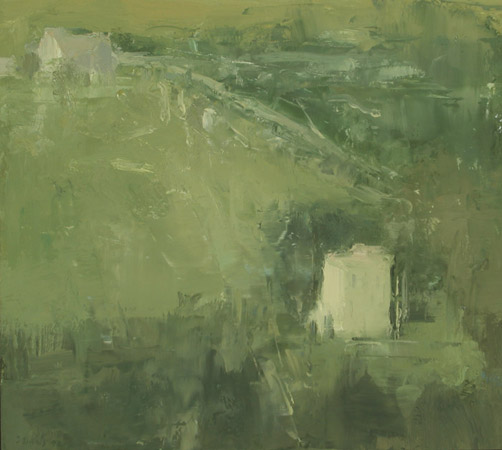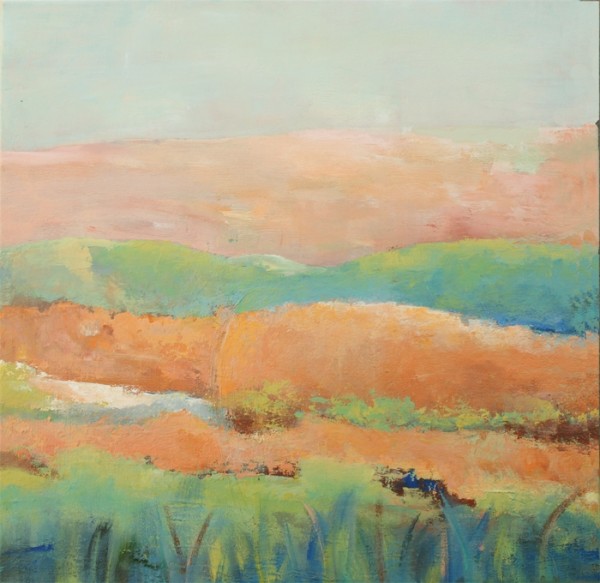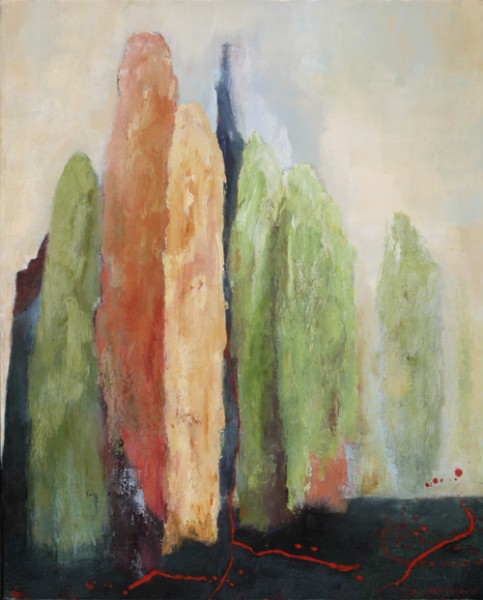I consider myself an abstract landscape painter. As I lean more toward the abstract, I find myself struggling to completely give up the horizon line. As I looked at many abstract landscapes, I would say that about 95% have included one.
So I am wondering in landscape paintings, do people have a psychological need to see the horizon line? I spent about two hours trying to find some hint of information about why we like to see that line, but I could find nothing.
In defining this line, a common definition is that it is an imaginary horizontal line, sometimes referred to as eye level, which divides your line of vision when you look straight ahead.
Here is one of my paintings with an obvious horizon line.
Objects below this line are below your eye level, and objects above this line are above your eye level. Artists supposedly draw horizon lines to accurately establish perspective in their work.
Perceived Horizon Line
According to the Creative Glossary, “It is not necessary to include the horizon line in a landscape. However, it is important to include a ‘virtual’ horizon line in order to make a picture follow correct perspective. The horizon line is always one’s eye level. If one draws a line perpendicular to the ground outwardly from one’s eye level, this is what is considered the horizon line.”
Then there is this thought: “Be careful not to confuse skyline with horizon line. Skyline is also where the sky and land meet, but is generally in reference to mountains which are almost always above the actual horizon line/eye level.”
Here is an abstract landscape painting by Joan Fullerton. Can you see the perceived horizon line or where eye level is?
How about this one by Stuart Shils. Where is eye level?
Where am I going with this? I don’t know. I am getting rather left-brained about this topic, but it is something that I need to continue thinking about. When you create a painting or look at a painting are you aware the horizon line or where eye level is? I would love to know what you think?






